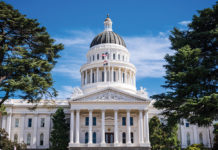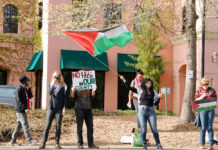It is time to come together and sit around the Thanksgiving table. Family members, from near and far, will be together again. We’ll eat turkey, mashed potatoes and cranberry sauce. There will be pies and a family blessing. The couch will be full after the meal and a football game will probably be on the TV, just the way the original Pilgrims celebrated the very first Thanksgiving in 1621.
Well, not exactly. But we will be filled with some of the same blessings and prayers shared by the earliest American settlers. Another harvest is passing and we have enough food and good fortunes to share with family and community.
At Thanksgiving, the most American of holidays, everyone is invited to the table. The Thanksgiving Table, full of turkey and all the fixings and surrounded by bright faces of many ages, gender and complexion, is the most indelible of all images of American spirit and tradition. It’s a Norman Rockwell painting, an annual episode on every TV sitcom, and the very personal childhood memory of each and every one of us.
America would not be America without Thanksgiving, even with the binge of TV football, Black Friday commercialism and crass twists on a Christian tradition.
And, America will no longer be America if we limit or shut out who gets to sit at our Thanksgiving tables. Remember it wasn’t the Pilgrims, but the natives who were the hosts of that first harvest celebration at Plymouth.
The Pilgrims were English Protestants who escaped religious tyranny and economic suppression and migrated to a new world. They were America’s first immigrants and they have been followed by millions in wave after wave ever after.
So who are we to deny a seat at America’s Thanksgiving table to “the tired, the poor, or the huddled masses” yearning to be free? That answer rests with the current political fight over reforms to our national immigration laws.
There were never any Pilgrims in Sonoma County, and the native people here were Pomos and Miwoks, not Mampanoags. But Sonoma County has been filled with immigrants, beginning with the Spanish from Mexico, the Russian fur traders and the overland settlers of the Gold Rush days.
Italians and Irish and other Europeans braved the long sea trip around the Cape of Horn and into San Francisco Bay to chase the promise of fertile lands and new freedoms. Others risked hard winters and unknown terrain across the Great Plains and Sierra Nevadas, only to strike out on claims of gold to become land squatters.
Many of the earliest Thanksgiving tables in frontier California were an amazing multi-cultural affair with Europeans, Asians, Pacific Islanders and ex-slaves from Africa.
Sonoma County was made the bountiful agricultural region it is today by Italian farmers and grapegrowers, Portuguese fishermen and Japanese orchardists. After the Pomo and Miwoks, the Mexican descendants from the Spanish Mission era were the first leaders and dominant landowners.
Thanksgiving is a time we mark our blessings for what it means to be Americans. Our country was formed on beliefs of religious freedoms and a blending of cultural backgrounds. No matter what suppression or social setbacks one escaped in their old country, everyone was new and equal in America. Everyone came to work, worship and make a better future.
Some in America want to erect barriers around our Thanksgiving table and keep their blessings to themselves. They fear new immigrants will take their jobs, move into their neighborhoods or learn how to vote. They’re afraid somehow that even Thanksgiving could be threatened.
All this puts a dark cloud over this year’s Thanksgiving tables. The political clash over America’s immigration laws is taking on the ugliness of a cultural war. It all seems like the opposite of “giving thanks.”
— Rollie Atkinson
64
F
Healdsburg
April 3, 2025







